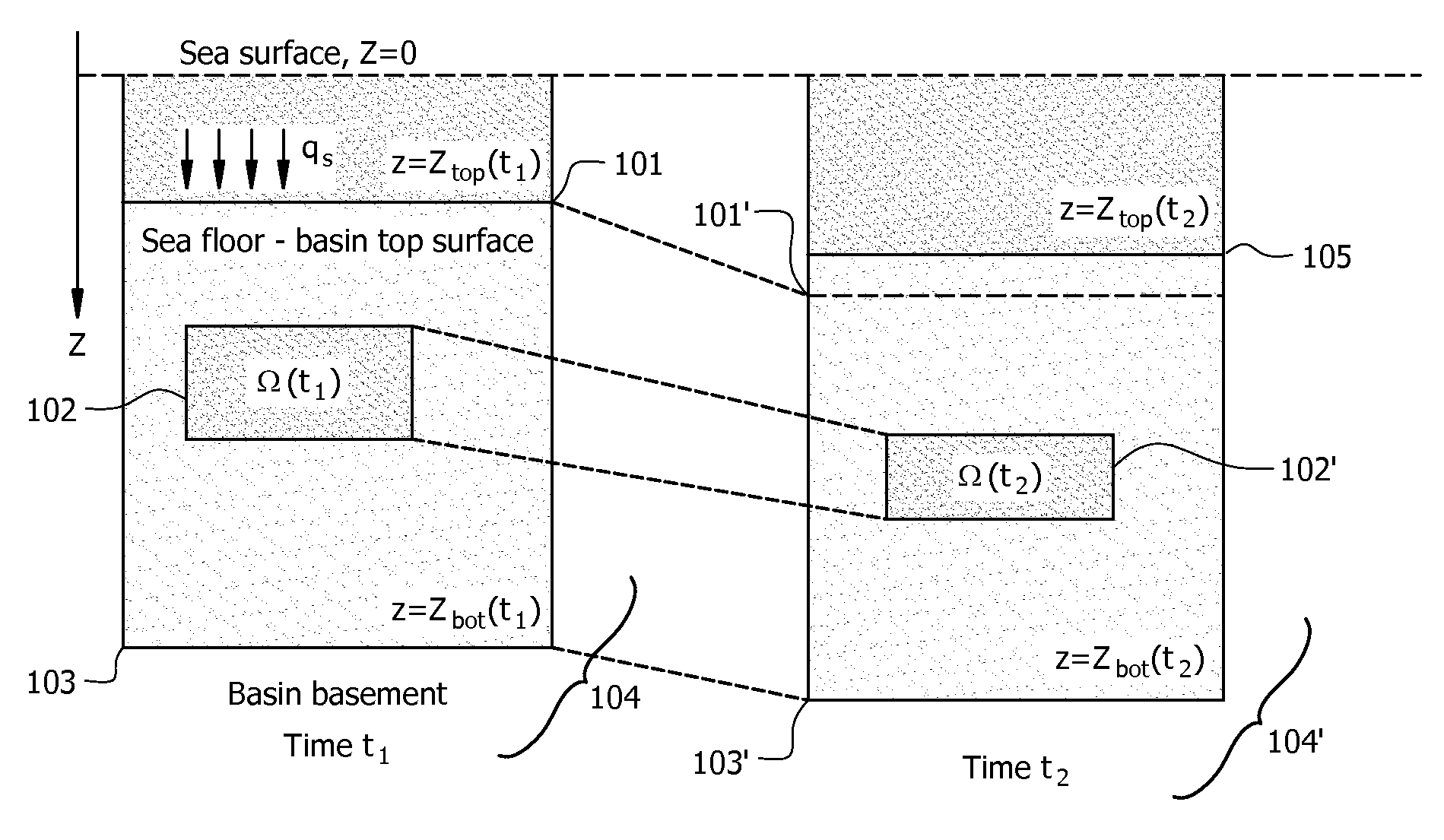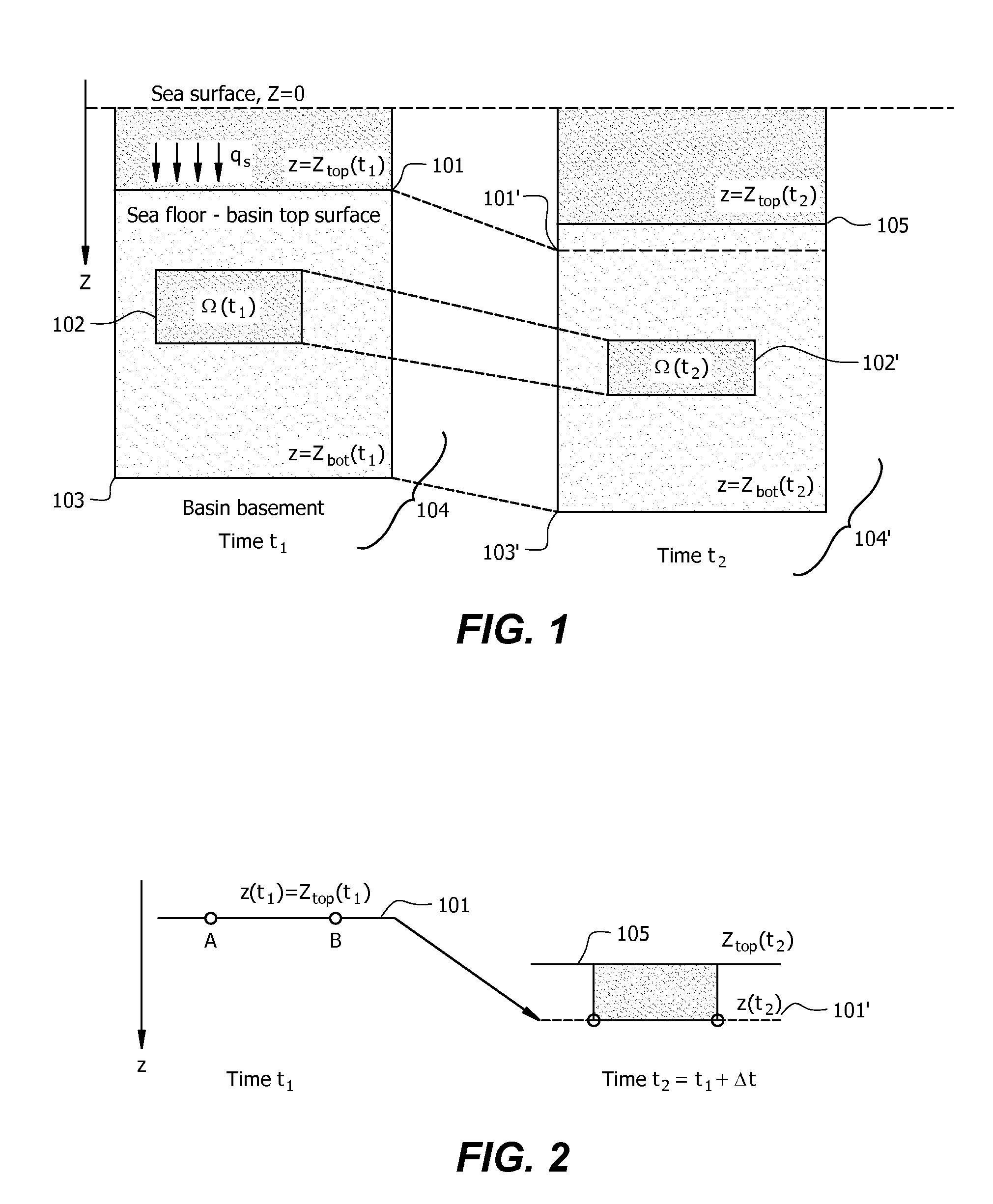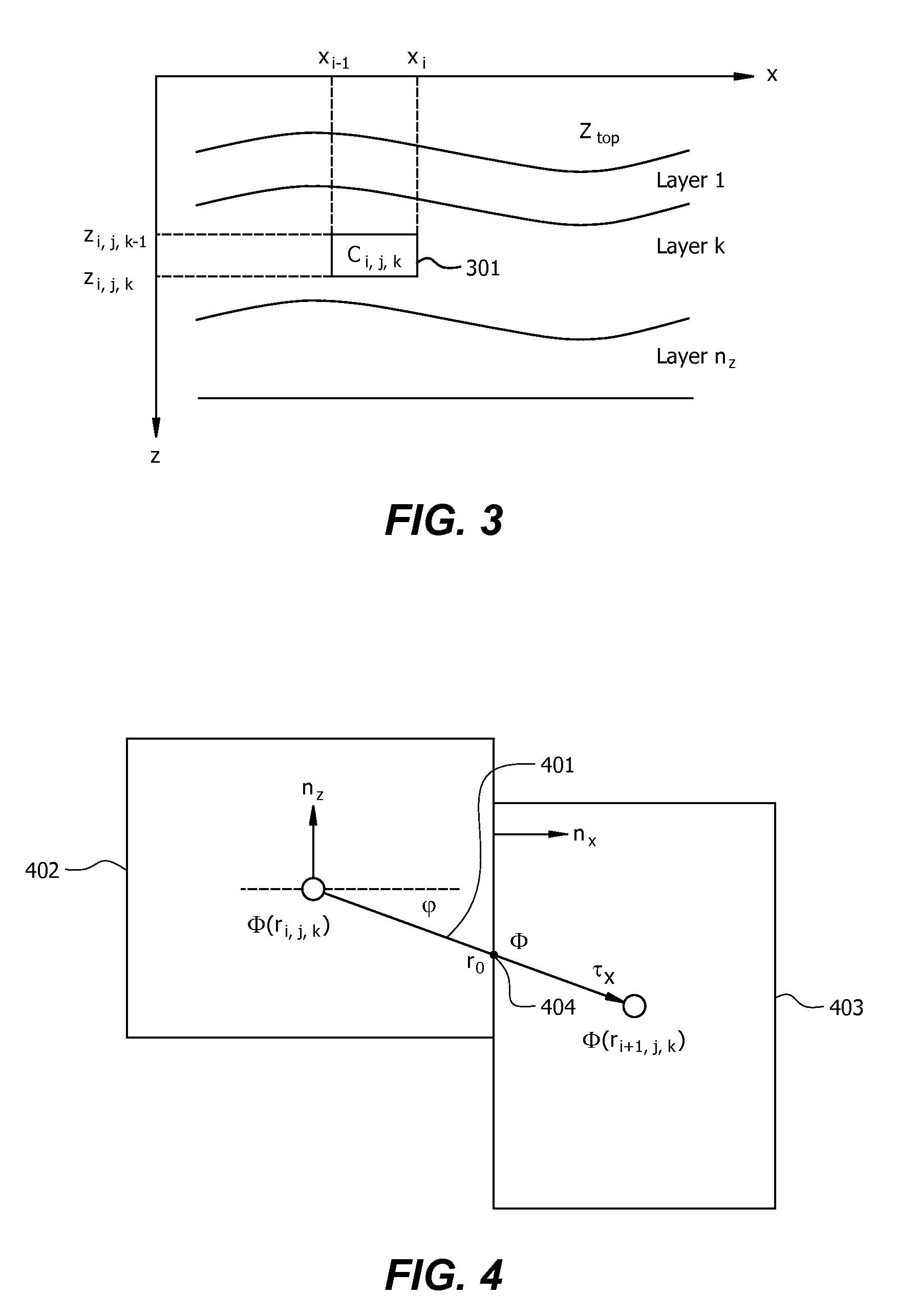Modeling In Sedimentary Basins
a sedimentary basin and model technology, applied in the field of computer modeling, can solve the problems of high overpressure, inability to accept the approach, complex numerical modeling of such a coupled process, etc., and achieve the effect of simplifying the compaction phenomenon
- Summary
- Abstract
- Description
- Claims
- Application Information
AI Technical Summary
Benefits of technology
Problems solved by technology
Method used
Image
Examples
Embodiment Construction
[0031]Embodiments of the invention are useful for modeling subsurface oil fields. The examples of the embodiments described herein may reference such oil fields. However, the embodiments may be used to model other domains involving other materials and / or processes. For example, embodiments can be used to model distribution of contaminant liquids in the subsurface basin, migration of radioactive substances from the underground storage facilities, or migration of other liquids, water, natural gas, or other gases.
[0032]The data used in such simulations can be derived by various techniques such as stratigraphic analysis, seismic inversion, or geological interpretation of those by geoscientists, using sensors to measure various characteristics of the basin.
[0033]The following describes compaction, decompaction, and fluid flow modeling according to embodiments of the invention. The models preferably take into account a version of mechanical equilibrium of the media. In the description, a ...
PUM
 Login to View More
Login to View More Abstract
Description
Claims
Application Information
 Login to View More
Login to View More - R&D
- Intellectual Property
- Life Sciences
- Materials
- Tech Scout
- Unparalleled Data Quality
- Higher Quality Content
- 60% Fewer Hallucinations
Browse by: Latest US Patents, China's latest patents, Technical Efficacy Thesaurus, Application Domain, Technology Topic, Popular Technical Reports.
© 2025 PatSnap. All rights reserved.Legal|Privacy policy|Modern Slavery Act Transparency Statement|Sitemap|About US| Contact US: help@patsnap.com



